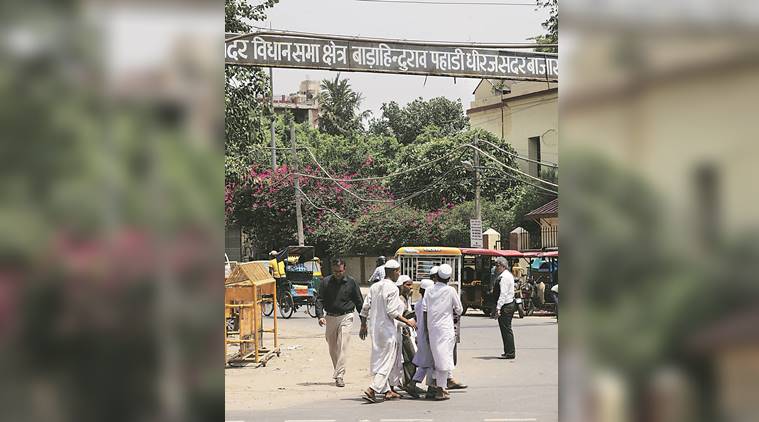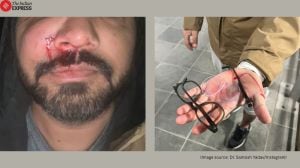Delhi: From a nobleman’s mansion to site of 1857 Revolt, the many faces of Bara Hindu Rao Hospital
Sitting atop the gently sloping North Delhi Ridge, most of the original House (Bara) of Hindu Rao has been rebuilt and expanded to its present form.
 The mansion has lent its name to the North Corporation’s largest hospital and the area surrounding it. Express photo by Abhinav Saha
The mansion has lent its name to the North Corporation’s largest hospital and the area surrounding it. Express photo by Abhinav Saha
Cultural ferment, meet-and-greet between Indian and British overlords, murder and the mutiny — at the centre of all this was the 19th Century mansion which has lent its name to North Delhi Municipal Corporation’s largest hospital and the area surrounding it, Bara Hindu Rao.
Today, the hospital complex comprises multiple grey and red-brick buildings of utilitarian block-like architecture. Sitting atop the gently sloping North Delhi Ridge, most of the original House (Bara) of Hindu Rao has been rebuilt and expanded to its present form. Its eventful history has seen it pass from being the home of an ‘Indianised’ coloniser to that of an ‘Anglicised’ Indian nobleman; to a site of military combat during the Revolt of 1857 to a military hospital; and finally a civilian hospital in 1911.
Dr Mahesh Gopalan, who teaches history at St Stephen’s College, said the location of the mansion right atop the ridge meant it served as a strategic centre for the British during the Revolt of 1857. “The part of the ridge Hindu Rao’s house is located on overlooks Tis Hazari on one side, and Old Delhi’s Sadar Bazar on the other. The latter is from where mutineers would draw a lot of support. The spot was strategic for the British because it looked down at Delhi from a height and was shielded by the forest. The line of the British would have extended from Bara Hindu Rao to right behind where Kashmere Gate Metro Station stands today. They would have also kept supplies where St Stephen’s College stands today, which is the other part of the ridge over which the English had control,” he said.
Raja Hindu Rao was the brother of Baiza Bai, the wife of the adopted son of Mahadaji Sindhia of Gwalior. He bought the mansion when he moved to Delhi after he, along with his sister, fled a rebellion against her by her adopted son in 1833.
Emily Eden, who had created his lithograph, wrote: “…he (Hindu Rao) is well known in European society, with which he is fond of mixing… a very constant attendant on the person of the Governor General… riding with him on his morning marches.”
Before Hindu Rao bought the house between 1831 and 1833, it belonged to William Fraser — a Scotsman, Persian scholar and agent to the Governor General in Delhi. After Hindu Rao’s death in 1855, the mansion assumed multiple roles — it became a centre of the 1857 Revolt in Delhi; a Gorkha batallion from July 1857; and a military hospital later. In 1911, it was turned into a civilian hospital.












